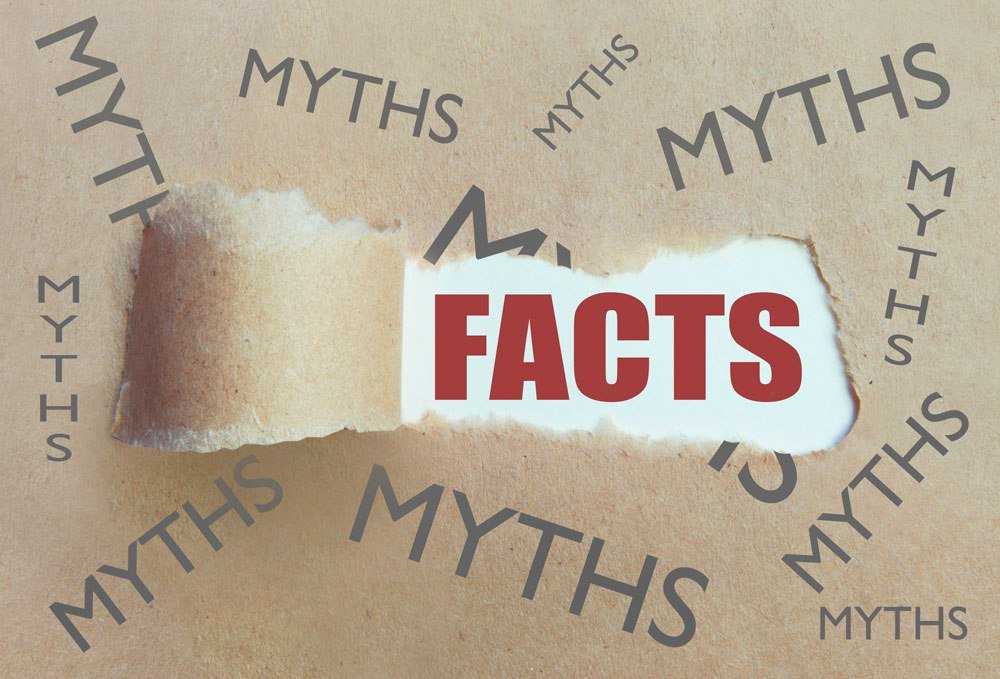BY: ANDREW STEWART
Life insurance. Just the term itself can put people on edge and run the other way. Some people might think they are wasting time and money if they sign up for life insurance or if they buy or believe in it, that their lives will be shortened. Life insurance is not a simple product. Even term life policies have many elements that must be considered carefully in order to arrive at the proper type and amount of coverage. Term life insurance is generally the simplest and cheapest form. You buy coverage for a specific time period, and it can usually be renewed, but premiums will increase based on age and health factors. All other types of life insurance are permanent, but there are two other varieties, whole life and universal life. Each type is slightly different, making each one ideal for certain types of people.
The myths listed below are just a few of the largest misconceptions individuals have regarding the necessity of life insurance.
Myth No.1: I Don’t Need Coverage, I’m Single With No Dependents
Even single people need at least enough life insurance to cover the costs of personal debts, medical and funeral bills. If you are uninsured, you may be leaving a legacy of expenses for your family to deal with on top of the emotional shock. Being young also usually means you’re more active and probably putting yourself at risk more often than the older generation by travelling, clubbing, hiking, boating, driving long distances and staying out later. Your body may be younger and less likely to break down on you, but your high-risk activities put you in the same boat as older, less healthy people.
Myth 2: I’m a stay-at-home parent. There isn’t a need to replace my income since there isn’t an income to replace.
Have you ever stopped to think just how much would it cost to replace a stay-at-home mom or dad? Average income for all the work a stay-at-home mom or dad accomplishes equates to about $113,000 if your family had to outsource it all. Insurance for a stay-at-home parent is unique because you’re not replacing income. Instead, you’re replacing services that he or she provides on a daily basis. One of the biggest, long-term expenses your family will face without you is the cost of childcare. You can leave a small nest egg behind to help your children when they’re grown. Your family won’t be saddled with funeral cost.
Myth No.3: Your Employer-Provided Life Insurance Coverage Is Enough
If you make $75,000 per year, your employer might provide $75,000 or $150,000 in coverage at little or no out-of-pocket cost to you, and the premiums will come straight out of your paycheck. If your premature death would be a financial burden to your spouse and/or children, you probably need coverage worth five to ten times your annual salary. You’ll lose your coverage if your job situation changes and you are not entitled to getting back the premiums you paid while there. Some policies do allow you to convert your group policy to an individual one, but it will likely become much more expensive.
Speak with a family advisor to discuss more about your personal situation.
Myth 4: My kids are all adults and my house has been paid off, so what do I need life insurance for?
Everyone has daily living expenses. Just because the home is paid off doesn’t mean there aren’t other financial obligations for which your spouse would be responsible, such as owning multiple cars, a boat, an RV or another large purchase you both made later on in your lives. Also, consider this: If your spouse outlives you by 10, 20 or even 30 years, he or she might not be able to afford to stay in an assisted living center when he or she can no longer take care of him- or herself. Are estate taxes a concern?
Do you want to leave a large portion of your estate to charity? Do you own a business? If you answer any of these “yes”, you may need life insurance well beyond the time when your kids are grown.


 Community News2 weeks ago
Community News2 weeks ago
 Community News2 weeks ago
Community News2 weeks ago
 Community News2 weeks ago
Community News2 weeks ago
 Community News2 weeks ago
Community News2 weeks ago
 Community News7 days ago
Community News7 days ago
 Community News7 days ago
Community News7 days ago
 Community News7 days ago
Community News7 days ago
 Community News7 days ago
Community News7 days ago































